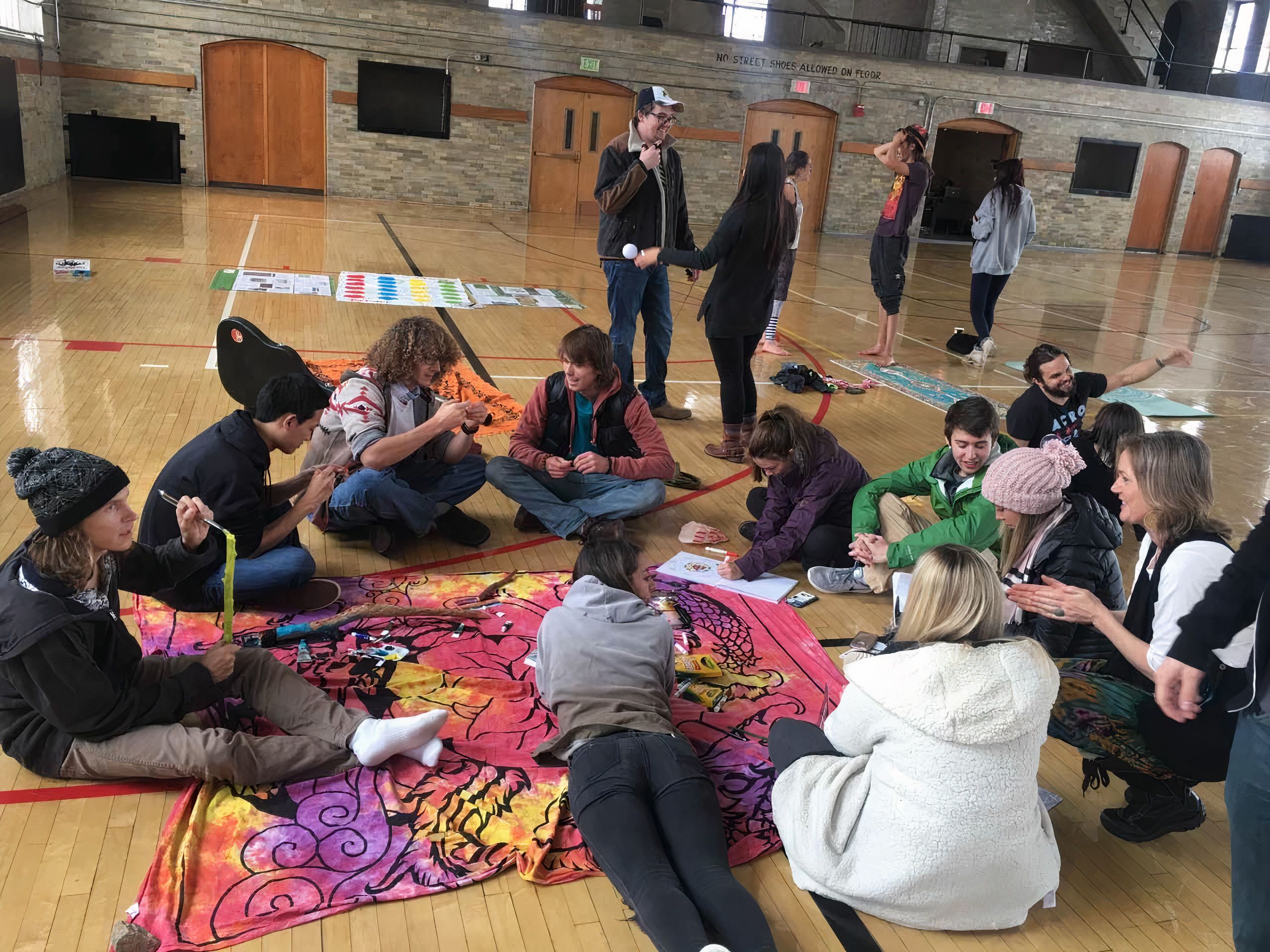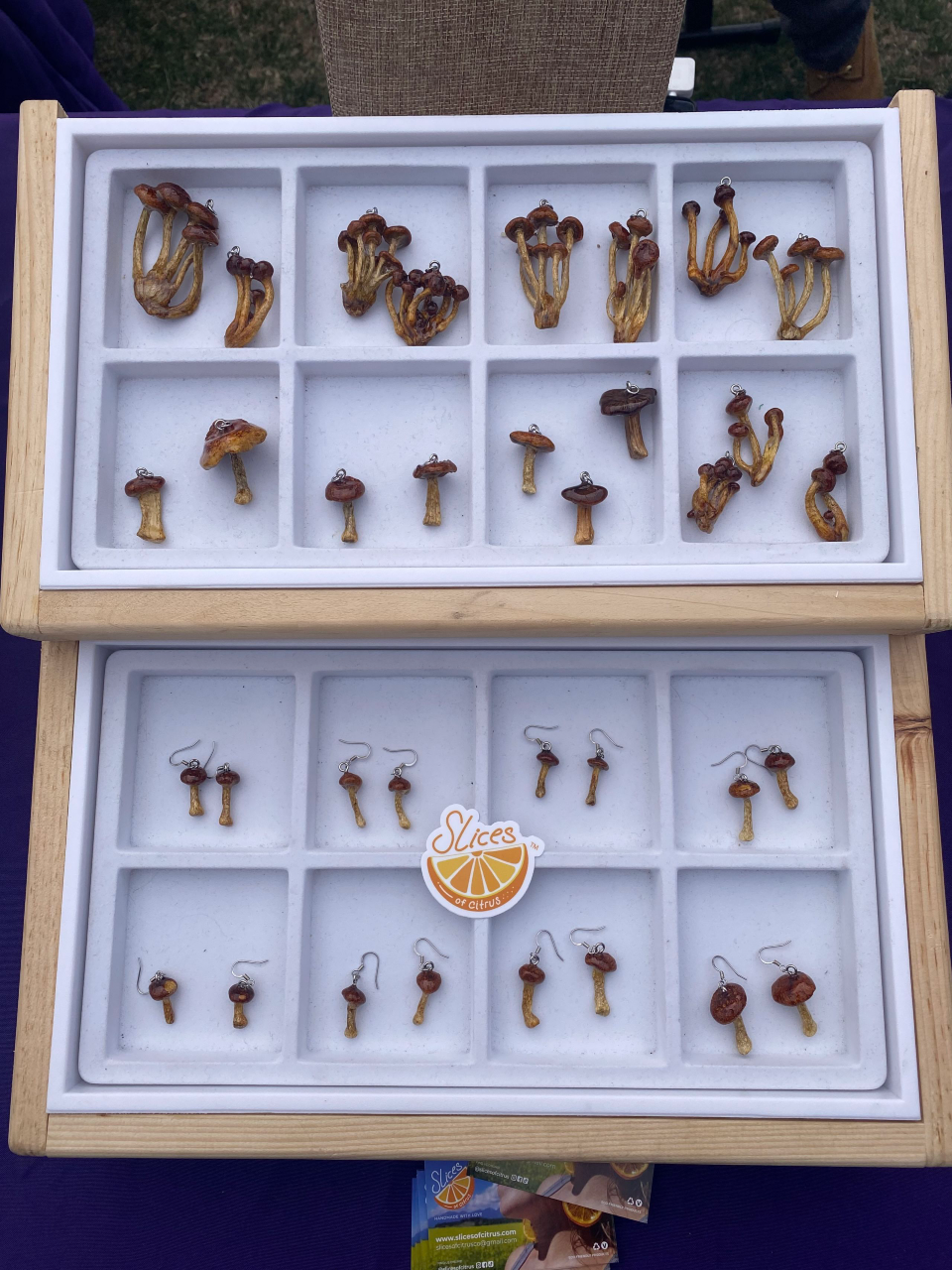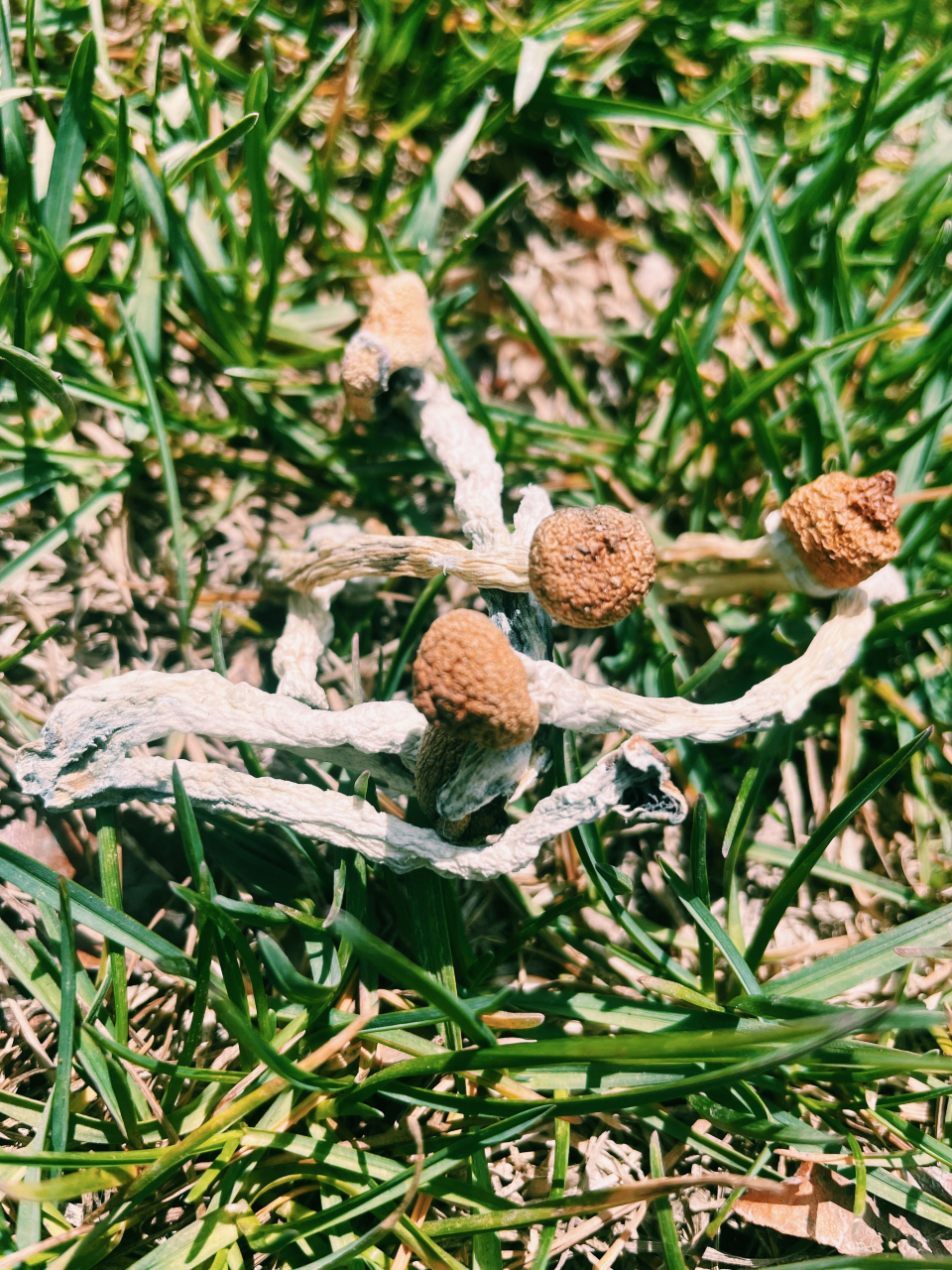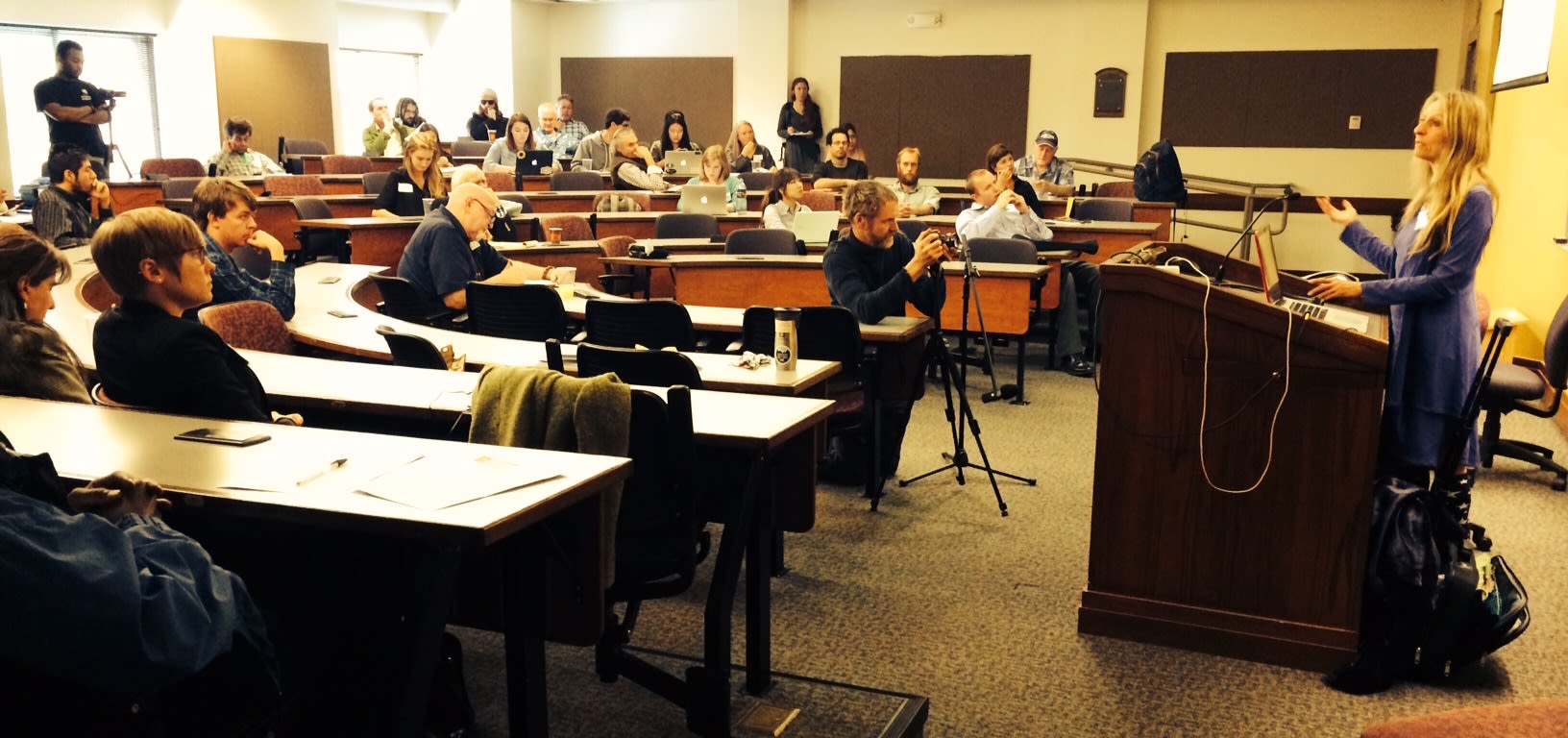CU’s Psychedelic Club Alters Anti-Drug Mindset

Chad Tannous used to struggle through his days. Burdened by chronic neck and back pain since his teen years, he was left yearning for an escape.
This pain began as Tannous was withdrawing from benzodiazepines. It is recommended that people overcoming addiction to these drugs use a taper, meaning you take smaller and smaller doses over time. Failing to do this can cause serious withdrawal symptoms.
Tannous experienced this firsthand, leading to years of suffering.
Searching for a cure, he decided to take a risk. He started smoking cannabis.
At the time, the drug was illegal in his native New Jersey. On top of that, he had to face the judging eyes of his family members.
“I come from a pretty large, pretty conservative family in New Jersey, and you know, they’re immigrants. So they all were raised on sort of old country values,” Tannous said.
But cannabis offered him something more important than family approval: Lasting relief and a life-long passion for changing anti-drug sentiments.
After departing New Jersey, Tannous moved to Boulder, CO. Now, Tannous draws from his experience with psychedelics and other drugs to direct a first-of-its-kind organization. He is the co-president of University of Colorado Boulder’s Psychedelic Club, which seeks to open minds and shift the public conversation surrounding psychedelic drugs.
“When I first came into contact with Psychedelic Club, it was kind of small, not as big as it is now. It was a really refreshing space to be in,” Tannous said.

Founded at CU in 2015, Psychedelic Club has since spawned 27 more chapters across the country. The CU branch alone currently has upwards of 250 members. Prior to the COVID-19 pandemic, in-person meetings were sometimes attended by 75 to 100 people, according to Carol Conzelman, a global studies instructor at CU, who is also the club’s faculty advisor.
The club discusses drug laws, research, history and promotes safe drug use. Overall, the group is about education, Conzelman said.
“People are uncomfortable with this conversation still because they assume that education is equivalent to advocacy for use,” said Conzelman, who also teaches a course on drug policy at CU. “And like I said, it is not. A lot of the members of the Psychedelic Club are not actually users. They are scholars, or they are interested citizens that want to be better informed.”
Erin Shayne first became interested in psychedelic therapy when she received her bachelor’s degree in psychology from the University of Maryland Baltimore. After joining the Ecology and Evolutionary Biology program at CU, she immersed herself in the school’s Psychedelic Club.
“I guess I started [experimenting with psychedelics] out of curiosity and hearing super positive stories about the experiences,” Shayne said.
Shayne admits she was intimidated by the drug at first. It wasn’t until after her research on how psychedelics can positively change your psychology that she realized how it could help her.
“I have ADHD with a lovely sprinkle of anxiety and bipolarity runs in my family,” Shayne said. “When I first took psychedelics it felt like a hug from the universe, no anger and anxiety, just happy and loving”
Shayne sees hope that psychedelics may transform depressed minds. Using them can reverse conditions in which the body fails to create serotonin, an important mood stabilizer, bolstering more positive states of being.
According to members of the Psychedelic Club, these drugs can heal patients in ways no other medication can. With the possibility of decriminalization and approval from the U.S. Food and Drug Administration, CU Psychedelic Club, along with other activists and professionals in Boulder, are seeking to remove stigma and increase access to psychedelics, all in hopes of erasing long-held beliefs.

"A huge game changer"
Previously shunned as a result of the Nixon administration’s War on Drugs, psilocybin (magic mushrooms), MDMA (molly/ecstasy), and ketamine are beginning to make waves for their healing possibilities. In 2017, the FDA granted breakthrough designation to MDMA trials for post-traumatic stress disorder. This allowed for the trial process to speed up, a big step on the path to FDA approval. The next year, trials studying psilocybin’s impact on depression were given the same designation. These studies are currently in Phase 3, the final stage before approval, and have proven these psychedelics to be effective.
“Ketamine becoming federally legal was a huge game changer,” said the Rev. Jay Waxenberg. He is a psychedelic guide at Boulder’s Center for Medicinal Mindfulness, which provides guided cannabis and ketamine therapy sessions.
Tannous agrees, “Ketamine is a great example because that is a substance where we can actually see what the benefits are of having something be legal and having something be decriminalized,” he says. “So you can go work with a therapist and you can actually have a professional guide you through this experience.”
In May 2019, Denver became the first city in the U.S. to decriminalize psilocybin. Voters passed a bill making it the lowest priority for law enforcement. This comes after a shift in public perception towards the substance. Psilocybin was classified as a Schedule 1 drug in 1970, giving it the same status as drugs like heroin with a high potential for abuse.
Crucial studies paved the way for decriminalization. Specifically, a 2006 study by Johns Hopkins University demonstrated a decrease in anxiety and depression symptoms with the use of magic mushrooms. This, and other studies like it, are considered landmarks in the revival of psychedelic-assisted psychotherapy.
Author and journalist Michael Pollan is also credited in proving the medicinal benefits of psychedelics. In his 2018 book “How to Change Your Mind: What the New Science of Psychedelics Teaches Us About Consciousness, Dying, Addiction, Depression, and Transcendence,” Pollan argues psychedelics make you “sane” more often than they make you “crazy.” In addition to citing scientific research, Pollan describes his own experiences with psychedelics and how they helped him understand his own mind better than he ever had before.

Rooted in stigma
Pollan, and other researchers, have helped legitimize the use of psychedelics. However, there is still a large amount of stigma ingrained in American society due to decades of anti-drug messaging fueled by the War on Drugs.
Coined by President Nixon in 1971, The War on Drugs was launched in order to curb the use of drugs. It followed the hippie movement of the 1960s in which the use of drugs, especially psychedelics, was common. The policies implemented by the Nixon and Reagan administrations may have decreased the level of drug use, but they also led to high rates of violence and incarceration.
The War on Drugs has had the greatest effect on indigenous communities and people of color. According to the Center for American Progress, Black people are six times more likely to be arrested for drug offenses than white people, even though white people use drugs at roughly the same rate. Black and Latino communities are also more likely to die of an overdose, many of which are caused by laced drugs found on the black market as a result of the War on Drugs.
“The drug war is so tightly interconnected with the industrial prison complex that really if there is anybody, any organization, any party that you really see repping, you know, pro-drug war, I guess, propaganda you will eventually find that those people have a racist motive,” Tannous says. “There’s something at play involving wanting to keep the state of incarceration the way it is right now.”
Abstinence vs. acknowledgment
The War on Drugs is not about safe drug use, rather, it is about completely abstaining from all drugs.
As part of these initiatives, former First Lady Nancy Reagan launched the “Just Say No” campaign.
Launched in the 1980s, the goal of “Just Say No” was to steer young children away from drugs. This slogan made it seem like the decision to use was a simple “yes or no” question, and that drug addiction is solely the product of choosing the wrong answer.
In 1983, the Drug Abuse Resistance Education program, better known as D.A.R.E., was founded. Also aimed at K-12 students, the program sought to equate not doing drugs with being the cool kid in school. Despite claiming to be effective, D.A.R.E. is often deemed a failure by recovery programs. The federally-funded initiative relied on police to teach children about the dangers of drugs, and heavily relied on fear-mongering instead of compassion.
Growing up in the 1980s, Conzelman remembers the downfalls of these campaigns. As an advisor to Psychedelic Club, she is against the “abstinence-only” approach to drugs that DARE and “Just Say No” encourage.
“[Psychedelic Club’s] goal is to educate their members about these different substances,” Conzelman said. She said club members see each other as responsible people who have the ability to make choices about how they are going to use psychedelics. Spreading reliable information, she says, helps facilitate safe drug use.
“So no one is promoting the use of any substance at all, but it’s just acknowledging that adults are going to make choices,” she said.
Conzelman believes the “Just Say No” and DARE models have made reliable information about drugs, like their medical benefits, hard to access, and therefore have put people in jeopardy. She has carried this belief into her teaching and work with Psychedelic Club.
The group is reversing old, War-On-Drugs-inspired conversations about psychedelics. They aim to educate in ways the DARE and “Just Say No” programs failed to: With community, safety and awareness. Members of Psychedelic Club are not simply advocating for the use of drugs, but making sure that the public is aware of where the psychedelic world is headed. They hold weekly meetings featuring guest speakers, movie screenings and discussions about personal experiences with psychedelics.
In meetings, members can “share their insights from psychedelic experiences, integrate your psychedelic experiences, and talk about also harm reduction tips in a space where they’re not going to be persecuted and where they have assurance that they won’t be persecuted,” Tannous said.
“So no one is promoting the use of any substance at all, but it’s just acknowledging that adults are going to make choices.”
Reducing harm
With decriminalization efforts underway in Boulder and other U.S. cities, Conzelman said the Psychedelic Club’s emphasis on safety and education should be adopted at a national level.
“You can’t just legalize something and just throw it on the market,” she said. “You have to accompany decriminalization and legalization with aggressive public education, but responsible public education, not the fear-mongering. That is the holdover from the prohibition paradigm.”
Public education about psychedelics is a major step in making drug use safer. Teaching harm reduction tactics is a main goal of the Psychedelic Club.
“You have to accompany decriminalization and legalization with aggressive public education, but responsible public education, not the fear-mongering.”
A couple of years ago, the group provided drug testing kits to its members. These were meant to test substances for fentanyl, a synthetic opioid commonly found in street drugs and linked to overdose and death. If a substance purchased off the street tested positive for fentanyl prior to use, it could save a life.
The University put the distribution of these kits to a halt but still offers Narcan as an emergency .
“[These kits were given out] as a form of harm reduction and as a form of public safety. Again, this is not advocacy. This is public safety,” Conzelman said. “And the chancellor shut that down because according to the CU administration, the testing kits were considered drug paraphernalia. That’s how they categorize them.”
Though the administration has been supportive of the club, their response to drug testing kits exemplifies the prevalence of anti-drug sentiments. Members of Psychedelic Club believe the classification of the kits as “paraphernalia” is a counterproductive view of drug use. They feel this viewpoint fails to acknowledge that people are taking drugs at all, and it does not encourage safety. If these kits were available more widely, they could help prevent cases of overdose and death.
CU Chief Spokesperson Ryan Huff did not respond to our requests for comment.
In February, Boulder County Public Health announced they had found “street drugs” (Xanax and Oxycodone) laced with fentanyl. This followed the overdose deaths of numerous New Vista High School students.
According to the Multidisciplinary Association of Psychedelic Science (MAPS), criminalization has allowed the black market to thrive. And when the black market thrives drugs are more likely to be laced and are therefore more dangerous. Specifically, MAPS found a majority of deaths tied to MDMA were not caused by the psychedelic itself, but by what it was laced with.
If psychedelics were to be decriminalized in Boulder, it would make room for more drug safety. Conzelman said incidents can not only be prevented with decriminalization, but with more education and less Drug War messaging.
“People don’t realize that not only is the problem with fentanyl in the street drug supply, but the opioid overdose crisis itself is directly caused by drug prohibition,” Conzelman said. “So you hear our elected officials and response to this saying ‘Oh, we need more militarization. We need more enforcement. We need more policing. We need more hardcore sentences,’ and we know that that doesn’t work.”
Carol Conzelman on misconceptions surrounding drug legalization
Have a safe trip
Psychedelics are often perceived as less dangerous than other drugs, but the difference in ketamine and psilocybin use cannot be understated. Ketamine resulted in a total of 1,150 emergency room visits in 2011, and abuse can result in seizures, psychosis and even death.
However, psilocybin on its own has been proven to have little potential for abuse and nearly no possibility for overdose or fatality. In a study conducted by the National Library of Medicine of 44 patients, the only adverse effects noted were distortion of perception. However, it is common to experience adverse effects while undergoing a psychedelic experience.
Feelings of anxiety or panic attacks are common among users who overuse the substance. Many people are aware of the common experience of a “bad trip” where users experience a strong sensation of dysphoria and intrusive, negative thoughts. While most side effects subside with the duration of the trip, it can be possible for users who experience these negative feelings to have a difficult time integrating them into their lives, and they may have a traumatic emotional response to the trip.
These negative experiences or “bad trips” have been more commonly documented with first time users, which is why it is often recommended that first time users take a smaller dose of the substance until they know how it affects them and what possible side effects may come if they take a larger dose.
Though psychedelics are generally less likely to cause an overdose than other drugs, it is still crucial to use caution when taking them. Before beginning your trip, it is crucial to have control of your set, your mindset, and your setting, your environment. Conzelman said it is important to ask yourself a few crucial questions prior to taking a psychedelic.
According to Conzelman, you need to assess how much you know about the substance, what your intentions are behind using it, how you feel at the time of use, if you have any behavioral or genetic conditions that could impact your experience, and if you feel physically safe as you embark on your trip. Making sure you are in the right mindset can make all the difference, Tannous and Conzelman say.
“I certainly have seen people take it too far with psychedelics,” Tannous said. “And you know, it’s worrying, and I think it can be its own substance use issue. That being said, I think people still deserve the right to do what they want with their body. I don’t think that should be restricted in any way.”
Chad Tannous on Psychedelic Club’s trips to The Root Kava Co. in Boulder.
As part of their harm reduction work, the Psychedelic Club advises these substances be used in a safe, trusting space. Integration circles and therapy centers, like the Center for Medicinal Mindfulness in Boulder, provide a secure setting for a psychedelic trip.
“I think people still deserve the right to do what they want with their body. I don’t think that should be restricted in any way.”
Rev. Waxenberg, a psychedelic Guide at the Center, says he aims to provide a comfortable space for his patients. He says some of his patients go through “regular therapy” before trying psychedelic therapy in order to make sure they are on the right path. After deciding to use psychedelics, the Center offers week-long group retreats in which patients can participate in cannabis or psychedelic experiences. These sessions can help integrate someone into the psychedelic circle, leading them to go down the rabbithole of these therapies. Rev. Waxenberg says some patients visit the Center regularly, while some come and go depending on what they are trying to heal with psychedelics.
In all his guided sessions, Rev. Waxenberg said he sets the scene in order to facilitate the perfect trip.
“They’ll invite the medicine and a kind of a ritualistic setting, lay down, put the eye covers on, you know, we’ll play music, they’ll go through a three-to-five hour long experience,” Waxenberg said.
Providing safe experiences has always been a priority for Rev. Waxenberg and his team, but COVID-19 has added another level of safety precautions.
“They’ll invite the medicine and a kind of a ritualistic setting, lay down, put the eye covers on, you know, we’ll play music, they’ll go through a three-to-five hour long experience”
Rev. Waxenberg says cannabis sessions have mostly moved online, since most of his patients use cannabis at home regardless. Ketamine sessions, however, have continued in person. Rev. Waxenberg asks patients to submit a negative test, wear a mask and socially distance themselves. All the sessions happen in open, ventilated areas. This adjustment, he says, has been difficult.
“It’s so weird,” Rev. Waxenberg said. “Cause it’s like, they have a mask on, it’s hard to hear somebody and can’t really see their breathing as well.”
Rev. Waxenberg on his office at the Center for Medicinal Mindfulness in Boulder.
Psychedelic exposure
As more patients return to the Center for Medicinal Mindfulness for in-person therapy, Rev. Waxenberg said he is looking forward to psychedelic therapy becoming more accepted. This acceptance, he said, can be facilitated through “cultural exposé.”
“Books like ‘How to Change Your Mind’ or documentaries and so forth really move the cultural zeitgeist, which in turn leads to laws being changed and people’s stigmas dropping,” he said.
In recent years, psychedelic drugs have become more visible in the media. Gwyneth Paltrow’s Netflix Series “The Goop Lab” featured Paltrow’s employees taking psilocybin in Jamaica, Harry Styles admits he took mushrooms while writing his 2019 album, and Netflix’s “Have A Good Trip” documentary features numerous celebrities, like A$AP Rocky and Ben Stiller, discussing their psychedelic experiences. In addition to this, Pollan’s 2018 book “How To Change Your Mind” has brought psychedelics into the mainstream. Tannous believes these portrayals have helped create change within the psychedelic community.
“We are seeing public figures like Elon Musk and like really … big people step forward and say ‘Psychedelics are part of my life and they have changed my life,’” Tannous said. “I think that’s the kind of exposure we need, so I would like to see that continuing to happen.”

Paying tribute
While Conzelman feels it is important to normalize the use of psychedelics, she fears these portrayals may be making psychedelics look less serious than they are. The education and resources that Psychedelic Club advocates for, she says, fill in the gaps that the media may leave out.
“Carrying a ceremonial context and into your psychedelic work will always help you because that’s the way psychedelics have been used for since prehistory”
Part of this education involves looking at the originators of psychedelics. Though the medical benefits of these substances have only been recently proven by large-scale research, indigenous communities have been using psychedelics for their healing properties for centuries. The War on Drugs shunned these communities for their drug use. And now that psychedelics are coming back to the mainstream, they are still left out.
“Ending the war on drugs is not just an end in itself, it is a part of this whole much larger project of decolonization, and what we have to do is decolonize the mind first,” Conzelman said. “And then we can decolonize the systems that humans have created arbitrarily linked to the colonialist mindset and set of assumptions, you know, extremely ethnocentric, that imposed these kinds of ideologies onto indigenous communities in the U.S. and around the world.”
In the group, acknowledgement of the history of these drugs is important. When he is taking psychedelics, Tannous pays tribute to the people who paved the way for him to heal.
“Carrying a ceremonial context and into your psychedelic work will always help you because that’s the way psychedelics have been used for since prehistory,” he said. “I think that that’s the way that it should be done, is going into it with an intention.”
Even though Psychedelic Club places an emphasis on the War on Drugs and the drugs’ indigenous origins, Conzelman says decolonization and inclusion need to be explored more in the larger world of psychedelics, especially as the drugs become a more popular form of treatment.
A new mindset
With the FDA expected to approve MDMA for PTSD treatment this year, and Boulder activists working to decriminalize numerous psychedelics, there is still work to be done in order to legitimize these drugs.
The Psychedelic Club wants the public to know psychedelics are not just for partying, or for bright and flashy raves where you want to go all out. They are not just for rich celebrities who want to have a cool experience they can talk about in a Netflix documentary.
“These are professionals, this is professional things happening,” Tannous said. “It’s all certified, they’re all legit. I think just highlighting the patients and the therapists and showing their work is what needs to be done.”
Tannous is living proof that psychedelic drugs have the power to heal. After nine years of consistent use, he no longer relies on cannabis to get him out of bed. He leads the Psychedelic Club with the goal of making sure everyone has the chance to transform their life in the way he has.
That work cannot be done overnight. It requires significant education, policy and overall mind changes. Tannous will not quit until anti-drug sentiments are a part of the past and psychedelics are seen as a safe, normal cure for all types of pain.
Till then, he starts another day, knowing he is no longer suffering through the hours.
If you are struggling through addiction, here are CU resources.
24-Hour Substance Abuse Crisis Line 303-441-1275
Originally produced for CU News Corps

